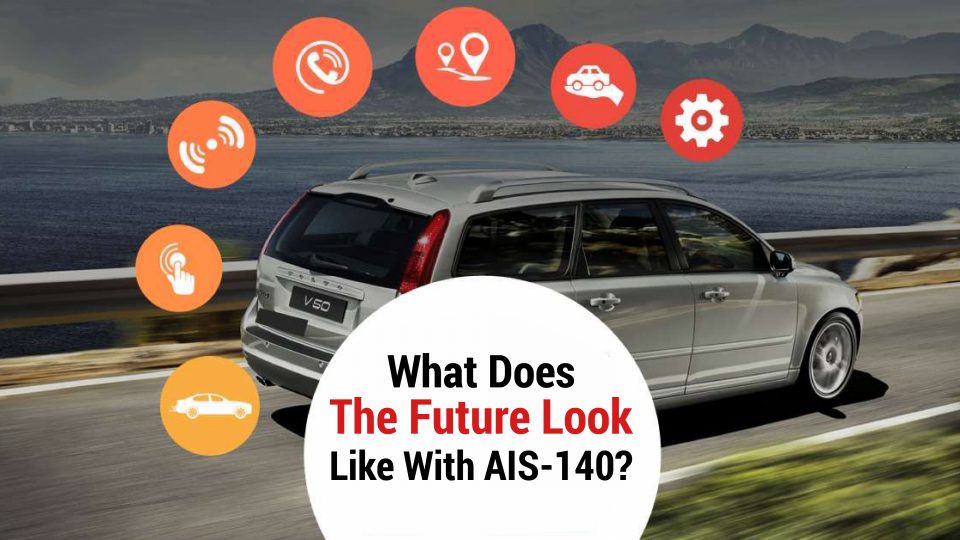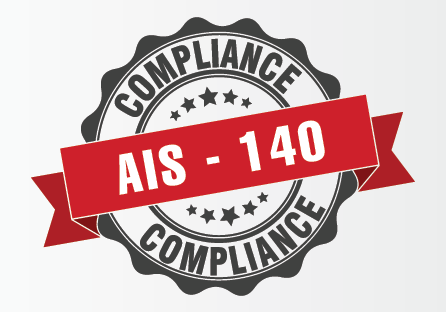

In a developing country like India, public transportation is used by the majority of the population. There have been several cases where the passenger has suffered a great loss directly or indirectly in public transportation due to lack of fleet features. These features include the safety measures, vehicle tracking systems, GPS, driver monitoring devices and a lot more. Due to lack of such necessary features and directives, there have been some cases have even led to brutal crimes against the passenger.
Get LocoNav’s Government Approved AIS 140 devices at best price
In the past, we talked about the ultimate guide to AIS-140. Now, we bring to you the answer to the proverbial question: What does the future look like with AIS-140?
Introduction to AIS-140
In order to maintain the safety of the passenger and look after the management of all public vehicles, the Ministry of Road Transport and Highways implemented an act on 28th November 2016. Following the mandate, ARAI (Automotive Research Association of India) published a set of standards which incorporates installing a vehicle tracking system that has camera surveillance system and an emergency request button as well. This set of standards is called Automotive Industry Standard 140 (AIS-140).

It is the latest and the most advanced Automotive Industry Standard which is introduced to execute enhanced safety features along with assisting the workers. This assistance comes during the vehicle operation by providing the necessary details about their journey.
According to the guidelines of AIS-140 Notifications,
- It is mandatory for all public as well as commercial vehicles to be equipped with a GPS tracking system, an emergency button which is also known as a panic button or SOS button, and camera surveillance.
- This move has been mandated such that the concerned authorities can keep a track of all public transport vehicles. They will have the updated location instantly, and so can even track the vehicle down in case of emergency.
- There is also provision for the passenger to directly speak with the authorities in the control room in case of any mishaps.
The System level approval along with the vehicle level approval together make up the AIS on ITS (Intelligent Transportation Systems). The system level approval is required to make sure that the current working vehicle is competent in implementing the ITS system. This will ultimately allow the ITS backend infrastructure to grow along with the State Road Transport Undertakings (STUs). This will ensure that not only the new vehicles but all the current working vehicles, which are capable of dealing with the system, are being equipped with the AIS to make the infrastructure more accountable.
Major specifications of the vehicle tracking system under the AIS-140
There are many specifications under the AIS-140, nearly 30 which the GPS system must follow. Below are the important ones:
![]()
- 4-hour internal battery back-up
- Alert ID on pressing the emergency button
- Assisted GPS 3 axis accelerometer and gyroscope
- Report to designated backend government servers with PVT data
- Dual IP addresses for PVT data
- E-SIM Operate between 8VDC to 32VDC
- Emergency response
- Location tracking through NavIC
- Multi-slot GPRS
- Unique ID or IMEI number
Also read: Advantages of Using FASTag in the Indian Transportation Industry
Also read: Vehicle Tracking System for Women Who Drive
Impact on the industry
Future vehicles will be fitted with all the advanced systems which align with AIS. Along with that, the existing vehicles too will have to be embedded with vehicle tracking systems that meet the AIS-140 specifications. This is the minimum requirement of the AIS. This means that the tracking systems will be required in a large number, therefore the automotive OEMs with the responsible companies should be ready for the supply.

On 28th April 2016, the final satellite of NavIC (previously known as IRNSS or Indian Regional Navigation Satellite System) was launched. According to the DIMTS or the Delhi Integrated Multi-Modal Transit System, the hardware should be compatible with both the GPS as well as the NavIC satellite systems.
Considering the fact that NavIC is India’s own positioning system, the government is putting in efforts to make sure that the industries see the bigger picture. It is encouraging them to come up with innovations such as cost-effective chips and modules which could be adopted with the NavIC system.
The fleet industry is also looking after improving their vehicles’ health monitoring system with the assistance of the automotive solution providers such as PBD Stacks, CAN Stacks and J1939 Stacks. This will further improve the ITS infrastructure and allow it to grow as the AIS principles need a healthy vehicle system to develop and prosper.
In order to let the AIS-140 grow at a good scale, it is important that advanced technologies such as the cloud computing is being implemented. Along with that, there are also issues with cybersecurity and data security that need to be looked into. The government is working towards resolving these as the cloud would not be able to function efficiently if there is a security breach.
There have been suggestions on creating test infrastructures which are capable of managing and maintaining IoT based devices in its STQC (Standardization Testing and Quality Certification) labs. In order to help the system developers deal with the complications, the AISC or Automotive Industry Standards Committee has published a document on ‘‘Data Privacy in Transportation ITS’.
Why do we need AIS-140?
Being the most advanced Automotive Industry Standard, AIS-140 offers many efficient solutions to the common problems suffered by the passengers as well as the operators –
- Passenger Safety
The primary objective of the new standard was to ensure the passenger’s safety through various features such as:
- the emergency button
- live-location updates
- the provision given to the passenger to communicate with the control room in case of any distress.
This is to make sure that the rider feels safe during their journey irrespective of the time or place.
- Enhanced Public Transportation
As mentioned before, the majority of the population depends on public transportation for their daily travel. AIS-140 has made it possible for them to enjoy their ride with no discomfort due to utilization of modern technology.
- Monitoring Vehicle Performance
Starting with the common details like fuel usage to the complex aspects like engine condition, AIS-140 GPS tracker gives a detailed report to the government operators about their fleet. This helps them to keep it updated with proper timely servicing and thereby, getting the best possible results.
- Driver Behaviour
This is perhaps the most advanced feature of the AIS. It records all the data during the operation such as speed, brake duration, overspeeding, idle time and other aspects. This report makes it possible for the authority to predict if the driver is stable or needs counseling. Thus, avoiding any situation of rash driving or possible accidents.
A peek into the future
One must remember that the AIS-140 is only a set of rule or Automotive Standard released by the ARAI. Until and unless it’s effectively implemented and utilized, it’s hardly of any use.

Having said that, people, as well as the government, have realized how badly we need the services which AIS offers. Given the fact that the standard is just a couple of years old, it will still need time to be highly effective at a large scale.
The possibility of AIS-140 is endless due to the rise, adaptation, and implementation of modern technologies. The technologies such as Artificial Intelligence, Internet of Things (IoT), Cloud technology and Machine Learning have a big role to play. If the government is able to incorporate these technologies in the ITS infrastructure, India will experience a completely different form of public transportation on the roads. This will make commute way more secure, convenient, fast and effective for the public.
LocoNav offers your business solutions for Vehicle Monitoring System, Fleet Management Solution and Telematics Device. LocoNav helps you in optimising your operations and business while you focus on the growth of your enterprise!
Quick read: The Indian Commercial Vehicle Industry in Years to Come: A Forecast
Quick read: 5 Things About Telematics You May Not Have Known